Sex
Sex and Gender Are Dials—Not Switches
Exploring sexual diversity as obliquely interconnected dimensions.
Posted May 13, 2016 Reviewed by Ekua Hagan
It has become more and more common for young people around the world to describe themselves not as a “man” or a “woman,” but as “something else.” One term for this something else is transgender.
Transgender is an umbrella term for a wide variety of different identities (e.g., genderqueer, gender variant, gender fluid, gender non-conforming, hyper-feminine gay man, asexual, etc.). The common core of transgender identities is they don’t fit within traditional cisgender binaries of men versus women (“cisgender” refers to people whose sexual and gendered identities align in typical ways).
Transgendered individuals frequently face intense prejudices and physical dangers in trying to live their authentic lives around the world (looking at you, North Carolina). Here is a brief, emotionally-compelling video describing some transgender people’s problematic experiences with health care in the USA. It’s a powerful video, I encourage you to watch it and think about how cisgenders would feel if they were treated like transgender people in your society. Think about it.
Another increasingly common variation of sexual identity expression is transsexuality. Recently, Caitlyn Jenner, the Wachowski sisters, and many other famous people have publically announced they have changed their sexual identity from male to female (or vice versa).
According to a widespread conception of what it means to be transsexual, most transsexual women were always “women” in terms of their inner psychology (i.e., they felt their sexual identity was “woman” and they often had female-typical/feminine-gendered desires, interests, and attitudes). Transsexual women were never really men on the inside, according to this narrative; they were women who had the misfortune of being born in the wrong sexual body. Not everyone agrees with this view, including many transsexuals themselves (see here), but it is a very common narrative.
A Periodic Table of Sexual Diversity
Some sexual scientists have tried to chart the many different expressions of sex/gender identity, putting together formal models of what we know about variations in sexual identity (man, woman, something else), gendered identity (masculine, feminine, androgynous, something else; note: the term “gender identity” is often conflated with sexual identity, here I use gendered identity to refer to the degree a person is typically masculine and/or feminine for their society), sexual orientation (androphilic [finding male bodies erotic], gynephilic [finding female bodies erotic], bisexual, asexual, something else), mating orientation (monogamous, polyamorous, open, something else), and other important forms of sexual diversity.
Leading sexual scientist Sari van Anders (2015) recently made an excellent attempt at integrating several of these sex/gender diversities here. She distinguishes between sex (including male and female as dimensions), gender/sex (man and woman as dimensions), and gender (masculine and feminine as dimensions), emphasizing variation in the intensity of each sexual configuration.
The esteemed Anne Fausto-Sterling (2012) has argued for using dynamical systems theory to understand varying influences on sex/gender diversity (see also Fausto-Sterling et al., 2012). She emphasizes the John Money's classic 5-sexes approach of Genetic Chromosomal Sex (XX, XY, 45X, 47XXY, XYY, etc.), Fetal Gonadal Sex (ovaries versus testicles and sex as subsequent gamete production), Fetal Hormonal Sex (in utero exposure to testosterone and subsequent organizational effects), Internal Reproductive Sex (uterus/cervix/fallopian tubes vs. vas deferens/prostate/epididymis), and External Genital Sex (vagina/clitoris vs. scrotum/penis).
Sexological legend Milton Diamond also has a compelling model of sex/gender diversity he calls Biased-Interaction Theory (see Diamond, 2006).
Sexual scientists have learned a lot about sex/gender identities, but really we’ve just begun to understand the causes underlying the myriad ways humans express their sexual selves. There is much work to be done.
A Scientific Understanding of Sex and Gender Is Challenging
As I see it, there are three big challenges with trying to create integrative models of sex/gender diversity (or developing a “Periodic Table” of sexualities). The first is that, unlike atoms, human sexuality doesn’t come in the form of clean, distinct categories (actually, in some ways atoms don’t either).
Even something as simple as “male” versus “female” as a category is an oversimplification that ignores intersexual conditions. For example, people with complete Androgen Insensitivity Syndrome have X and Y chromosomes (typically, this makes one “male”), but they usually grow up as female and are completely unaware they are chromosomally male until infertility issues lead to a genetic revelation.
There are a wide variety of other intersexual conditions or disorders of sexual development (DSDs), including different types of Congenital Adrenal Hyperplasia, Klinefelter Syndrome, Swyer Syndrome, and 5-Alpha Reductase Deficiency in which a person with X and Y chromosomes has a feminine looking body until reaching puberty, after which their body begins to take on a masculine appearance. Interestingly, several field studies of 5-Alpha Reductase Deficiency find that even though parents often assign and raise these children as girls, once puberty is reached nearly all of these children develop male sexual identities and gynephilic sexual orientations (Gray et al., 2016). In total, perhaps as many as 1.7% of all humans have an intersexual condition (Fausto-Sterling, 2000). So, sexual categories can be scientifically problematic, even for something as seemingly simple as male/female sexual identity.
A second big challenge with creating a Periodic Table of sexual diversity is most expressions of sexuality do not take the form of one, simple dimension (let alone category). Think about sexual orientation, for instance. Most sexual diversity scientists believe sexual orientation should be thought of as at least two dimensions: Androphilia (whether someone finds male bodies erotic) and Gynephilia (whether someone finds female bodies erotic). It is true many people are high on only one of those dimensions, but most people (especially women) probably do not find only one sex erotically interesting (Chivers et al., 2007; Lippa, 2006).
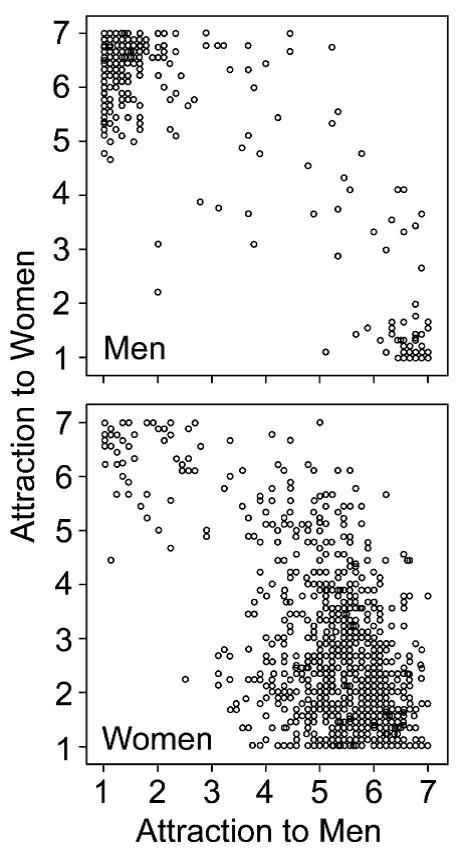
For those who want measuring sexuality to be easy, wait...it gets worse. Even these two dimensions are too simple, as sexual orientation is a lot more than just who turns you on erotically. A popular measure of sexual orientation, the Klein Sex Grid (see below), measures sexual orientation in terms of who you are attracted to, who you have sex with, who you fantasize about, how you self-identify, and much more. It also measures facets of sexual orientation in the past, present, future, and ideal contexts. No, most of the important expressions of sexual diversity cannot be understood in terms of a simple, singular dimension.

The third challenge with creating a Periodic Table of sexual diversity is that even if sexual scientists could agree precisely 70 distinct dimensions underlay human sexual diversity, perhaps clustering in 7 major domains (let’s call them the Sexy Seven), we face the incredibly complex problem of organizing precisely how these dimensions are statistically (and causally) related to one another.
Are all the sexual diversity dimensions independent, meaning if we know something about a person on one dimension (e.g., masculine gendered identity), we don’t know anything about how they score on other dimensions (e.g., gynephilic sexual orientation)? Empirically, it appears most sexual diversity dimensions are not independent (they may be called obliquely related). So, if we know a person is masculine in one way, we know it is likely (though not perfectly so) the person is masculine in other ways, too.
Again, though, oblique associations are not perfect when it comes to sexuality, especially when you dig down into the details underneath broad labels like “sexual orientation.” For example, although who we have sexual intercourse with often correlates with sexual orientation, it is not perfectly correlated (e.g., many prisoners engage in same-sex behaviors, but do not consider themselves homosexual; Beck & Johnson, 2012). Even more complicating is the finding that people’s sexual diversity levels can change over time, such as with the relatively frequent occurrence of sexual orientation fluidity in women (Diamond, 2008; Kuhle & Radtke, 2013).
What this means is that although male/female, masculine/feminine, androphilic/gynephilic, and so forth might be scientifically useful as overall summaries (a sort of shorthand until we figure out what is really happening), massive amounts of sexual diversity exist under that surface-level description. The underlying variation is not random (cisgender men are usually more masculine and gynephilic, on average, than cisgender women), but a lot of hidden and scientifically important sexuality exists underneath sexual labels. Scientifically, this is a problem.
Sex and Gender as Dials (Not Switches)
I’m certainly not the first to suggest so, but I would argue a useful solution to many of these problems with a Periodic Table of sexual diversity is to think about sexuality as a series of interconnected, dimensional dials (rather than just a few categorical switches).
As an example, think about the many forms of sexual diversity associated with sexual identity differences. Rather than thinking about men/women as categorically different (or different along one dimension of masculinity versus femininity), I think it is more useful to think about sex differences as a series of numerous interconnected, multidimensional dials. Dials that can be turned up or down (individually, or in combinations) depending on one’s genetics, hormone levels, organizational effects in utero, activational effects of puberty, and a wide range of social, historical, and cultural factors (Pirlott & Schmitt, 2014; Schmitt, 2015).
One of the most powerful sources of moving up and down the many dials of sex/gender are the organizational effects of prenatal androgen exposure. Below, Ellis (2011) illustrates the differing typical testosterone experiences of human males and females across development.

According to the organizational hypothesis of sex differentiation, a key cause of male-female sex differences is the prenatal experience (or lack thereof) of androgen-related brain masculinization (Baron-Cohen, 2004; Lombardo et al., 2018). In humans, a critical gestational period exists during the second trimester during which male brains, but typically not female brains, are permanently altered in function and structure in ways producing masculinized physical and psychological traits (e.g., personalities, cognitive abilities, play preferences; Cohen-Bendahan et al., 2005; Hines, 2010).
As noted by Schmitt (2015), evidence supporting this organizational effect view arises from several sources, including:
- the degree of prenatal androgen exposure within normal levels predicts sex-differentiated psychology in girls and boys.
- girls prenatally exposed to male-typical levels of androgens (compared to their unaffected sisters) express more male-typical psychology
- infants (as young as 5 months) exhibit psychological sex differences before extensive socialization
- children exhibit many psychological sex differences before they have a conception of what sex/gender roles are or even what sex/gender is
- experimental and observational studies of neurological and hormonal substrates of adult sexual identity, gender dysphoria, and transsexualism imply some degree of biological sexual differentiation in men’s and women’s psychology
- experimental and observational studies of nonhuman animals (including closely related primates) implicate evolved origins for many sex differences in personality, cognition, and behavior
Perhaps as a result of these differential in utero exposures to testosterone, when we look around the world we find across all (or nearly all) cultures that men and women differ, on average, in many regards. Ellis (2011) documented 65 apparently universal sex differences in cognition and behavior, ranging from preferences and attitudes to interests and abilities.
Below is a (very limited) Top 10 List of sex differences that appear to transcend cultures…
Physical Traits (e.g., height, upper body strength, pubertal timing, voice, face, hips)
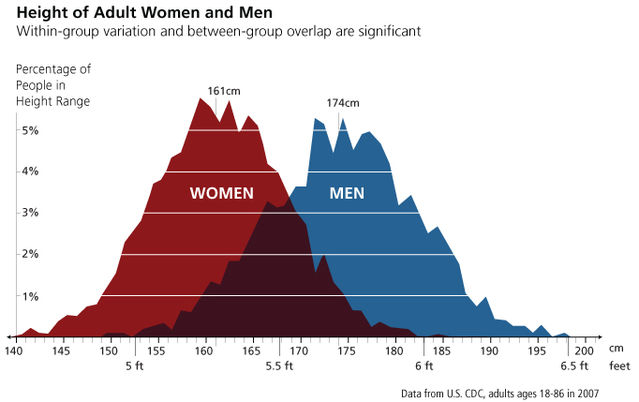
Mental Abilities (mental rotation/systematizing versus mental location and verbal ability)
Mate Preferences (face/body cues found attractive, fertility versus status mate choice)
Sexual Desires (sex drive, paraphilias, short-term versus sexual fluidity, long-term)
Personal Values (power, stimulation, hedonism, achievement, vs. benevolence, universalism)
Occupational Interests (things/realistic/investigative vs. people/artistic/social professions)
Social Interests (stick toys and competitive sports versus doll toys and domestic interests)
Social Behaviors (rough-tumble play, physical aggression, risk-taking versus compliance)
Mental Health (psychopathy/ADHD/retardation versus depression/anxiety/dependence)
Personality Traits (neuroticism, agreeableness; there is less than 10% overlap in men’s and women’s overall personalities; Del Giudice et al., 2012)
These differences across the sexual identities of men and women don’t exist as discrete categories, though. They manifest as obliquely related dimensional differences (see chart below). To predict someone’s sexual expressions, it helps quite a bit to know their sexual identity (and gendered identity, sexual orientation, mating orientation, etc.), but most people are not completely male-typical or female-typical in every regard (see Del Giudice et al., 2016).
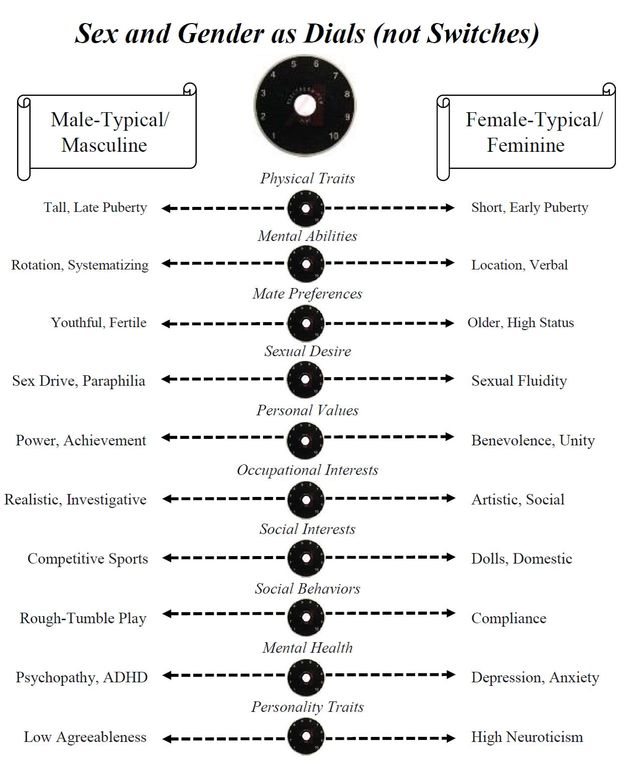
Scientifically, it’s important to note each of the dials I have presented in the figure above are, themselves, oversimplifications of what is happening in terms of evolved psychological adaptations (and at the genetic, hormonal, and neurological levels that generate culturally-consistent sex differences). Still, as a first step toward understanding sex/gender varieties it might be useful to think beyond categories, beyond singular dimensions, and beyond dichotomous/binary causes of variation along those dimensions.
What is especially interesting, I think, is how sexual diversity scientists have tracked evidence regarding these different sex/gender dials, evidence accumulating into an integrated, coherent account of how various causes of sex/gender variation (e.g., prenatal androgen exposure in males) are developmentally-timed and domain-specific (Bakker, 2019; Savic et al., 2010).
For instance, it may be that the dial for masculine “rough and tumble play” preference is turned up or down by varying levels of prenatal androgen exposure at a particular week of in utero development, whereas masculine “mental rotation abilities” may be caused by varying levels of prenatal androgen exposure during a different week of development (such as during mini-puberty during the first 3 months after birth, Pasterski et al., 2015; or activationally during puberty; Saxton, 2015; Wierenga et al., 2018). Indeed, pubertal activation releases a wave of psychological changes, sometimes unleashing profound sex differences (Imperato-McGinley et al., 1979, 1991; for an interesting case of intersexuality in which men's puberty overrides their lifetime of psychological socialization as girls, see here). Physically, differences in men's and women's vocal pitch and grip strength are both extremely large (with very little overlap), but clearly these sex differences are not present at birth and fully emerge only after puberty.
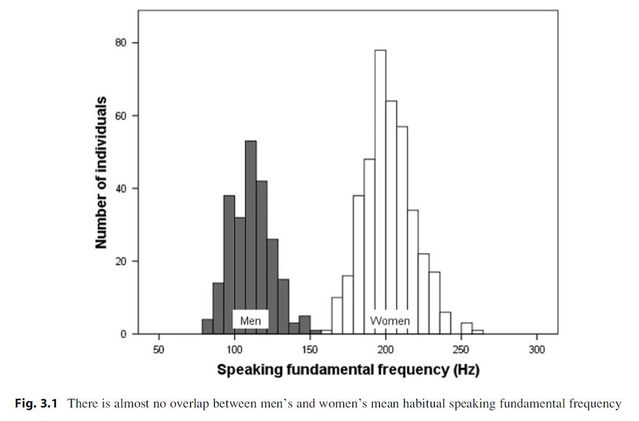
Undoubtedly, there exist some master-dials that affect a bunch of other dials (e.g., both rough and tumble play and mental rotation, or both vocal pitch and grip strength), and some dials may have antagonistic effects on other dials (i.e., more masculinity along one dial may cause less masculinity along another dial). Moreover, sex/gender movement along dials at one point in time might affect subsequent sexual expressions, both of which may depend on other direct genetic and activational effects (Khramtsova, Davis, & Stranger, 2018), and so forth. There is also increasing evidence that many sex differences emerge in middle childhood, mediated by hormone changes that occur before the onset of adolescent puberty (Del Giudice, 2014). And other sex differences (including in non-humans) emerge only after key experiences, such as the onset of sexual activity (Remedios et al., 2017).
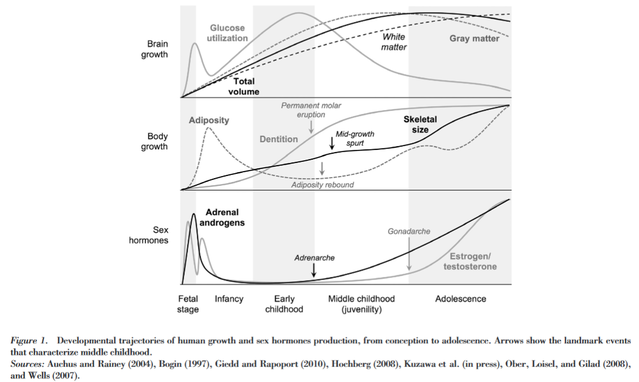
In the end, complete models of our evolved sex/gender developmental system are going to be incredibly complex, and dials (rather than switches) will be, in my view, a better metaphor for understanding how and why we exhibit such a variety of sex/gender expressions (see also Diamond, 2006; Fausto-Sterling, 2012; van Anders, 2015).
Transsexuality and Sex/Gender Dials
How might this sex/gender as dials (not switches) perspective help us understand transsexuality? For one, we shouldn’t expect only one form of male-to-female or female-to-male transsexuality (Chivers & Bailey, 2000). For instance, there is accumulating evidence that some (but not all) male-to-female transsexuals show signs of their sex/gender dials being turned toward feminine psychological and physical traits before transitioning (Guillamon et al., 2016; Hare et al., 2009; Kreukels et al., 2016; Saraswat et al., 2015; Schöning et al., 2010; Steensma et al., 2013; Zucker et al., 2016; cf. Hoekzema et al., 2015).
But that doesn’t mean these male-to-female transsexuals have women-typical psychology, brains, and gene activation along every dimension (Veale et al., 2008), neither do non-transsexual cisgender women for that matter (Chekroud et al., 2016; Del Giudice et al., 2016; Gershoni & Pietrokovski, 2017; Ingalhalikar et al., 2014; Paus et al., 2017; Ritchie et al., 2017; Ruigrok et al., 2014; Savic et al., 2017; Trabzuni et al., 2013). Instead, it appears many male-to-female transsexuals have had some of their sex/gender dials (including in their brains; Kruijver et al., 2000; Mueller et al., 2016; Smith et al., 2015; Swaab & Garcia-Falgueras, 2009; Zucker et al., 2016) turned toward female-typical/feminine psychology, and which ones may be especially informative regarding the causal origins of their (and everyone’s) sexual expression. Female-to-male transsexuals also show signs of male-typicality before any transitional treatments, including physical differences in their brains (Kreukels et al., 2016) and builds, such as bone proportions and fat distribution (Bosinski et al., 1997). Reviewing all existing literature on pre-existing brain differences, Kreukels et al. (2016) concluded, "brain phenotypes for FtM and MtF seem to exist, and provided evidence for the role of prenatal organization of the brain in the development of gender incongruence" (p. 125).
Second, the sex/gender as dials (not switches) view suggests one’s sexual identity might not be entirely “male” or “female” but very likely is something in between, depending on how one defines sexual identity. It suggests that, as many other cultures have done, modern societies need to make greater room for a wider, dial-based variety of sex/gender expressions. A person may be a natal male but consider herself primarily a woman in terms of sexual identity, androgynous in gendered identity (e.g., prefers some masculine interests/activities and some feminine interests/activities), gynephilic in sexual orientation (i.e., is a self-identified lesbian), polyamorous in mating orientation, and so forth. Her sex/gender dials may not be aligned in a cisgender manner, but her sex/gender expressions may be entirely consistent with the causal biological origins and developmental processes that give rise to sex/gender in all people. Even if they aren’t, however, that would not make her sexual rights illegitimate. It’s dangerous ground to have our sexual rights depend on our sexuality having a naturalistic origin (Diamond & Rosky, 2016).
I have not reviewed studies finding nonverbal behavior differences across several male-typical and female-typical dials. The way men and women walk, head tilt, gesture, smile, laugh, leer, and so forth show some differences, with a few exhibiting cross-cultural universality (Eibl-Eibesfeldt, 1988). Again, these sex differences are not expressed categorically, but as a series of interconnected, dimensional dials.
Now, imagine you grew up as a natal male, but your whole life your most natural and authentic self led you to express yourself nonverbally as female-typical in several ways. Perhaps your natural walk is more feminine, your natural smiling behavior is feminine, and so forth. You were punished and teased for this, so you tried to hide it as much as possible. But inside you knew you were different from most other boys, and you also felt some degree of gender dysphoria (e.g., desire to get rid of your penis). Although not the typical path to transsexuality (see Nieder et al., 2010), the description above includes just some of the possible dials of sex/gender. Imagine she also had 100s more dials turned toward feminine or female-typical mental abilities, mate preferences, sexual desires, personal values, occupational interests, social interests, social behaviors, mental health, and personality traits. In such a case, I hope most people would agree these sex/gender dial positions reasonably lead her to feel her authentic sexual identity self is female, even if her body is male.
A couple of caveats. It is critical to appreciate that even if a natal male has very feminine or female-typical physical and psychological features across 100s of sex/gender dials, this does not make him "a woman" or any less of "a man." Most (but not all) societies around the world would, disgracefully in my view, treat very poorly a self-identified man who had feminine or female-typical physical features, mental abilities, mate preferences, sexual desires, personal values, occupational interests, social interests, social behaviors, mental health, and personality traits. This doesn't mean he should become a woman in order to feel accepted by society, it means we need to change society to accept a wider range of sexual diversities. In writing Sexual Personalities, I hope I am contributing to this much needed social change.
It's also important to point out that some activists (especially certain feminists) feel transsexual women should not be viewed as self-identified "women" because they did not suffer from gender oppression like natal girls did as a child, nor have they possessed human female anatomy their whole lives. Germaine Greer controversially insisted transsexual women are not "women" because they don't know what it's like to have “a big, hairy, smelly vagina.” There is some truth to this, of course, but it also is true that many (if not most) transsexual women have suffered greatly while growing up, probably experiencing quite a bit of gendered trauma. In the future, more and more transsexuals will have grown up as their non-natal sex, and tend to do so in a mentally healthy way when supported (not attacked) by others. However the politics of transsexualism plays out around the world, I hope it is informed by the best sexual science we have to date.
Evolutionary Psychology and Sex/Gender Dials
Finally, it’s important to note the sex/gender as dials (not switches) approach is entirely consistent with an evolutionary perspective on human sexuality. Some researchers claim evolution does not apply to human sexual psychology because men and women do not have any evolved nature (Butler, 1990), or because male and female psychologies do not form totally separate binaries (e.g., Joel et al., 2015). Put simply, that is not how sexual selection processes and the evolution of sex differences work in the natural world (Buss, 1995; Del Giudice et al., 2016; see also here).
Just because not all men are taller than all women does not imply that sex differences in height are not important, evolved, or “real” (Gaulin & Boster, 1992). Nor does the finding that sex differences in height are not present at birth, or are not entirely mediated by sex differences in testosterone levels, or vary in size across cultures…the list of misconceptions about the evolutionary origins of sex differences is long (see here and here and here).
Yes, evolutionary selection pressures may lead male sexual identity to generally be co-aligned with other expressions of masculinity (e.g., a deeper voice, Puts et al., 2016; a stronger sex drive, Baumeister et al., 2001; more interest in competitive team sports; Deaner & Smith, 2013; externalizing forms of psychopathology, Phillips et al., 2018), but evolution in sexually-reproducing species allows for a lot of variation along the many sex/gender dials (due, for instance, to sexually-antagonistic selection pressures; Stearns et al., 2012; Stulp et al., 2012). Sex/gender dials do not all need to be turned “all the way up to 11” for evolution to play a role in producing human sexual diversity.
The view that sex and gender are best understood as interconnected, dimensional dials is completely consistent with evolutionary psychology. From an evolutionary perspective, it is extremely unlikely there is one “gender switch” adaptation that invariably gives rise to essentialist, determined, and dichotomous male and female psychologies. Wrong, wrong, and wrong. Rather, there are likely dozens (if not hundreds) of evolved sexuality adaptations, each turning the sex/gender dials of men and women in oblique, context-sensitive ways, each contributing a small part in generating the wonderful sex and gender variations observed in our species, all around the world.
References
Bakker, J. (2019). The Sexual Differentiation of the Human Brain: Role of Sex Hormones Versus Sex Chromosomes. Current Topics in Behavioral Neurosciences, 1-23.
Baron-Cohen, S. (2004). Essential difference: Male and female brains and the truth about autism. New York: Basic Books.
Baumeister, R. F., Catanese, K. R., & Vohs, K. D. (2001). Is there a gender difference in strength of sex drive? Theoretical views, conceptual distinctions, and a review of relevant evidence. Personality and Social Psychology Review, 5, 242-273.
Beck, A. J., & Johnson, C. (2012). Sexual victimization reported by former state prisoners, 2008. US Department of Justice, Office of Justice Programs, Bureau of Justice Statistics.
Blaker, N. M., Rompa, I., Dessing, I. H., Vriend, A. F., Herschberg, C., & Van Vugt, M. (2013). The height leadership advantage in men and women: Testing evolutionary psychology predictions about the perceptions of tall leaders. Group Processes & Intergroup Relations, 16, 17-27.
Bosinski, H. A., Schröder, I., Peter, M., Arndt, R., Wille, R., & Sippell, W. G. (1997). Anthropometrical measurements and androgen levels in males, females, and hormonally untreated female-to-male transsexuals. Archives of Sexual Behavior, 26, 143-157.
Buss, D.M. (1995). Psychological sex differences: Origins through sexual selection. American Psychologist, 50, 164-168.
Butler, J. (1990). Gender trouble. New York, NY: Routledge.
Chekroud, A. M., Ward, E. J., Rosenberg, M. D., & Holmes, A. J. (2016). Patterns in the human brain mosaic discriminate males from females. Proceedings of the National Academy of Sciences, 113(14), E1968-E1968.
Chivers, M. L., & Bailey, J. M. (2000). Sexual orientation of female-to-male transsexuals: A comparison of homosexual and nonhomosexual types. Archives of Sexual Behavior, 29, 259-278.
Chivers, M. L., Seto, M. C., & Blanchard, R. (2007). Gender and sexual orientation differences in sexual response to sexual activities versus gender of actors in sexual films. Journal of Personality and Social Psychology, 93, 1108-1121.
Cohen-Bendahan, C. et al. (2005). Prenatal sex hormone effects on child
and adult sex-typed behavior: Methods and findings. Neuroscience & Biobehavioral Reviews, 29, 353–384. doi:10.1016/j.neubiorev.2004.11.004.
Deaner, R. O., & Smith, B. A. (2013). Sex differences in sports across 50 societies. Cross-Cultural Research, 47, 268-309.
Del Giudice, M., Booth, T., & Irwing, P. (2012). The distance between Mars and Venus: Measuring global sex differences in personality. PloS one, 7, e29265.
Del Giudice, M. (2014). Middle childhood: An evolutionary‐developmental synthesis. Child Development Perspectives, 8, 193-200.
Del Giudice, M., Lippa, R. A., Puts, D. A., Bailey, D. H., Bailey, J. M., & Schmitt, D. P. (2016). Joel et al.'s method systematically fails to detect large, consistent sex differences. Proceedings of the National Academy of Sciences, 113, E1965-E1965.
Diamond, L. M. (2008). Sexual fluidity. New York: John Wiley & Sons, Ltd.
Diamond, L. M., & Rosky, C. J. (2016). Scrutinizing immutability: Research on sexual orientation and US legal advocacy for sexual minorities. The Journal of Sex Research, 53, 363-391.
Diamond, M. (2006). Biased-interaction theory of psychosexual development: “How does one know if one is male or female?” Sex Roles, 55, 589-600.
Eibl-Eibesfeldt, I. (1988). Social interactions in an ethological, cross-cultural perspective. In Cross-cultural Perspectives in Nonverbal Communication, Poyatos, F. (Ed), pp. 107-130. Hogrefe & Huber Publishers.
Ellis, L. (2011). Identifying and explaining apparent universal sex differences in cognition and behavior. Personality and Individual Differences, 51, 552-561.
Fausto-Sterling, A. (2000). Sexing the body: Gender politics and the construction of sexuality. New York: Basic Books.
Fausto-Sterling, A. (2012). Sex/gender: Biology in a social world. New York: Routledge.
Fausto-Sterling, A., Coll, C. G., & Lamarre, M. (2012). Sexing the baby: Part 2 applying dynamic systems theory to the emergences of sex-related differences in infants and toddlers. Social Science & Medicine, 74, 1693-1702.
Gaulin, S. J., & Boster, J. S. (1992). Human marriage systems and sexual dimorphism in stature. American Journal of Physical Anthropology, 89, 467-475.
Gershoni, M., & Pietrokovski, S. (2017). The landscape of sex-differential transcriptome and its consequent selection in human adults. BMC biology, 15, 7.
Gray, P.B., et al. (2016). A review of human male field studies of hormones and behavioral reproductive effort. Hormones and Behavior. http://dx.doi.org/10.1016/j.yhbeh.2016.07.004
Guillamon, A., Junque, C., & Gomez-Gil, E. (2016). A review of the status of brain structure research in transsexualism. Archives of Sexual Behavior, DOI: 10.1007/s10508-016-0768-5.
Hare, L., Bernard, P., Sánchez, F. J., Baird, P. N., Vilain, E., Kennedy, T., & Harley, V. R. (2009). Androgen receptor repeat length polymorphism associated with male-to-female transsexualism. Biological Psychiatry, 65, 93-96.
Hines, M. (2010). Sex-related variation in human behavior and the brain. Trends in Cognitive Sciences, 14, 448–456. doi: 10.1016/j.tics.2010.07.005
Hoekzema, E., Schagen, S. E., Kreukels, B. P., Veltman, D. J., Cohen-Kettenis, P. T., Delemarre-van de Waal, H., & Bakker, J. (2015). Regional volumes and spatial volumetric distribution of gray matter in the gender dysphoric brain. Psychoneuroendocrinology, 55, 59-71.
Imperato-McGinley, J., et al. (1979). Androgens and the Evolution of Male-gender Identity among Male pseudohermaphrodites with a 5a-reductase Deficiency. New England Journal of Medicine, 300, 1233-1237.
Imperato-McGinley, J., et al. (1991). A cluster of male pseudohermaphrodites with 5a-reductase deficiency in Papua New Guinea. Clinical Endocrinology, 34, 293-298.
Ingalhalikar, M., Smith, A., Parker, D., Satterthwaite, T. D., Elliott, M. A., Ruparel, K.,
Hakonarson, H., Gur, R.E., Gur, R.C., and Verma, R. (2014). Sex differences in the
structural connectome of the human brain. Proc Natl Acad Sci USA, 111, 823-828.
Joel, D., et al. (2015). Sex beyond the genitalia: The human brain mosaic. PNAS: 1509654112v1-201509654.
Khramtsova, E. A., Davis, L. K., & Stranger, B. E. (2018). The role of sex in the genomics of human complex traits. Nature Reviews Genetics.
Klein, F., Sepekoff, B., & Wolf, T. I. (1985). Sexual orientation: A multi-variable dynamic process. Journal of Homosexuality, 11, 35-49.
Kreukels, B. P., & Guillamon, A. (2016). Neuroimaging studies in people with gender incongruence. International Review of Psychiatry, 28, 1-9.
Kruijver, F. P., Zhou, J. N., Pool, C. W., Hofman, M. A., Gooren, L. J., & Swaab, D. F. (2000). Male-to-female transsexuals have female neuron numbers in a limbic nucleus. The Journal of Clinical Endocrinology & Metabolism, 85, 2034-2041.
Kuhle, B. X., & Radtke, S. (2013). Born both ways: The alloparenting hypothesis for sexual fluidity in women. Evolutionary Psychology, 11, 147470491301100202.
Lippa, R. A. (2006). Is high sex drive associated with increased sexual attraction to both sexes? It depends on whether you are male or female. Psychological Science, 17, 46-52.
Lombardo, V. et al. (2018). Sex-specific impact of prenatal androgens on intrinsic functional connectivity between social brain default mode subsystems. bioRxiv preprint first posted online Jan. 25, 2018. doi: https://doi.org/10.1101/253310
Mueller, S. C., Wierckx, K., Jackson, K., & T’sjoen, G. (2016). Circulating androgens correlate with resting-state MRI in transgender men. Psychoneuroendocrinology.
Nieder, T. O., Herff, M., Cerwenka, S., Preuss, W. F., Cohen‐Kettenis, P. T., De Cuypere, G., ... & Richter‐Appelt, H. (2011). Age of onset and sexual orientation in transsexual males and females. The Journal of Sexual Medicine, 8, 783-791.
Paus, T., Wong, A. P. Y., Syme, C., & Pausova, Z. (2017). Sex differences in the adolescent brain and body: Findings from the saguenay youth study. Journal of Neuroscience Research, 95(1-2), 362-370.
Pasterski, V., Acerini, C. L., Dunger, D. B., Ong, K. K., Hughes, I. A., Thankamony, A., & Hines, M. (2015). Postnatal penile growth concurrent with mini-puberty predicts later sex-typed play behavior: evidence for neurobehavioral effects of the postnatal androgen surge in typically developing boys. Hormones and Behavior, 69, 98-105.
Phillips, O.R., Onopa, A.K., Hsu, V., Ollila, H.M., Hillary, R.P., Hallmayer, J.,...& Singh, M.K. (2018). Beyond a binary classification of sex: An examination of brain sex differentiation, psychopathology, and genotype. Journal of the American Academy of Child & Adolescent Psychiatry. DOI: 10.1016/j.jaac.2018.09.425
Pirlott, A., & Schmitt, D. P. (2014). Gendered sexual culture. In A. Cohen (Ed.), New directions in the psychology of culture (pp. 191–216). Washington, DC: American Psychological Association Books.
Puts, D. A., Doll, L. M., & Hill, A. K. (2014). Sexual selection on human voices. In Evolutionary perspectives on human sexual psychology and behavior (pp. 69-86). Springer New York.
Puts, D. A., Hill, A. K., Bailey, D. H., Walker, R. S., Rendall, D., Wheatley, J. R., . . . Ramos-Fernandez, G. (2016). Sexual selection on male vocal fundamental frequency in humans and other anthropoids. Proc. R. Soc. B, 283. doi: 10.1098/rspb.2015.2830
Remedios, R., Kennedy, A., Zelikowsky, M., Grewe, B. F., Schnitzer, M. J., & Anderson, D. J. (2017). Social behaviour shapes hypothalamic neural ensemble representations of conspecific sex. Nature, 550, 388.
Ritchie, S. J., Cox, S. R., Shen, X., Lombardo, M. V., Reus, L. M., Alloza, C., ... & Liewald, D. C. (2017). Sex differences in the adult human brain: Evidence from 5,216 UK Biobank participants. bioRxiv, 123729.
Ruigrok, A.N., Salimi-Khorshidi, G., Lai, M.C., Baron-Cohen, S., Lombardo, M.V., Tait, R.J., & Suckling, J. (2014). A meta-analysis of sex differences in human brain structure. Neurosci Biobehav Rev, 39, 34-50.
Saraswat, A., Weinand, J., & Safer, J. (2015). Evidence supporting the biologic nature of gender identity. Endocrine Practice, 21, 199-204.
Savic, I., Frisen, L., Manzouri, A., Nordenstrom, A., & Lindén Hirschberg, A. (2017). Role of testosterone and Y chromosome genes for the masculinization of the human brain. Human Brain Mapping, 38(4), 1801-1814.
Savic, I., Garcia-Falgueras, A., & Swaab, D. F. (2010). Sexual differentiation of the human brain in relation to gender identity and sexual orientation. Progress in Brain Research, 186, 41-62.
Saxton, T. K. (2015). Experiences during specific developmental stages influence face preferences. Evolution and Human Behavior, 37, 21-28
Schmitt, D.P. (2015). The evolution of culturally-variable sex differences: Men and women are not always different, but when they are…it appears not to result from patriarchy or sex role socialization. In Weekes-Shackelford, V.A., & Shackelford, T.K. (Eds.), The evolution of sexuality (pp. 221-256). New York: Springer.
Schöning, S., Engelien, A., Bauer, C., Kugel, H., Kersting, A., Roestel, C., ... & Heindel, W. (2010). Neuroimaging differences in spatial cognition between men and male-to-female transsexuals before and during hormone therapy. The Journal of Sexual Medicine, 7, 1858-1867.
Smith, E. S., Junger, J., Derntl, B., & Habel, U. (2015). The transsexual brain–A review of findings on the neural basis of transsexualism. Neuroscience & Biobehavioral Reviews, 59, 251-266.
Stearns, S. C., Govindaraju, D. R., Ewbank, D., & Byars, S. G. (2012). Constraints on the coevolution of contemporary human males and females. Proceedings of the Royal Society of London B: Biological Sciences, 279, 4836-4844.
Steensma, T. D., Kreukels, B. P., de Vries, A. L., & Cohen-Kettenis, P. T. (2013). Gender identity development in adolescence. Hormones and Behavior, 64, 288-297.
Stulp, G., Kuijper, B., Buunk, A. P., Pollet, T. V., & Verhulst, S. (2012). Intralocus sexual conflict over human height. Biology Letters, rsbl20120590.
Swaab, D. F., & Garcia-Falgueras, A. (2009). Sexual differentiation of the human brain in relation to gender identity and sexual orientation. Functional Neurology, 24, 17-28.
Trabzuni, D., Ramasamy, A., Imran, S., Walker, R., Smith, C., Weale, M. E., ... & North American Brain Expression Consortium. (2013). Widespread sex differences in gene expression and splicing in the adult human brain. Nature Communications, 4.
van Anders, S. M. (2015). Beyond sexual orientation: Integrating gender/sex and diverse sexualities via sexual configurations theory. Archives of Sexual Behavior, 44, 1177-1213.
Veale, J. F., Clarke, D. E., & Lomax, T. C. (2008). Sexuality of male-to-female transsexuals. Archives of Sexual Behavior, 37, 586-597.
Wierenga, L. M., Bos, M. G., Schreuders, E., vd Kamp, F., Peper, J. S., Tamnes, C. K., & Crone, E. A. (2018). Unraveling age, puberty and testosterone effects on subcortical brain development across adolescence. Psychoneuroendocrinology, 91, 105-114.




